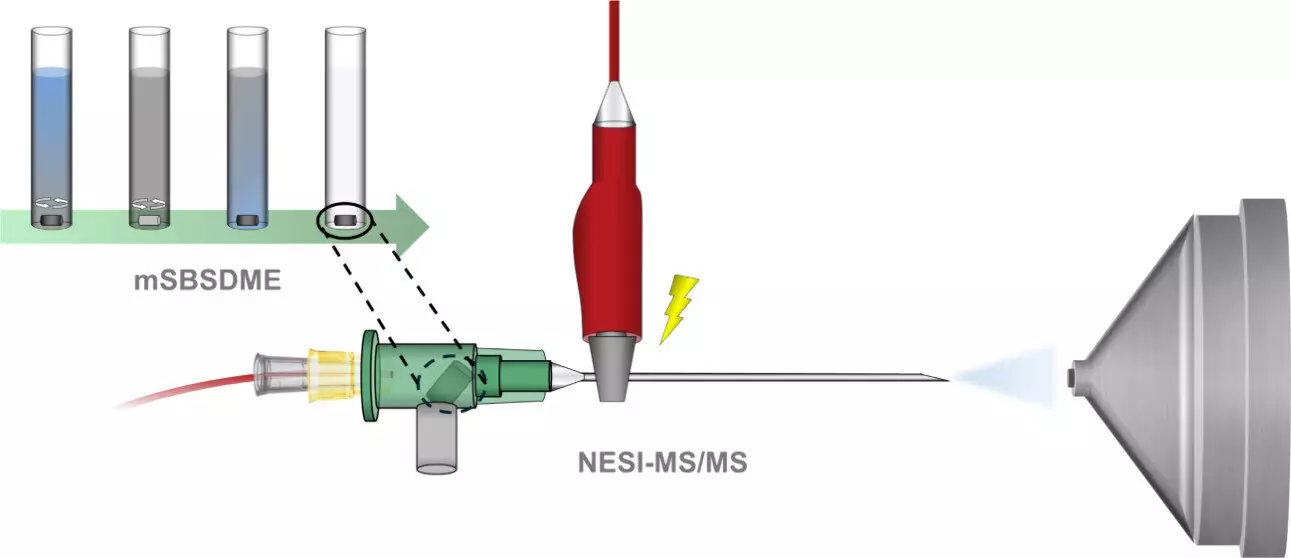In the ever-evolving landscape of substance use and regulation, cannabis stands out as the most widely utilized illegal drug in Europe. With an alarming estimate that around 8% of adults indulged in cannabis in 2022, the implications for public health and safety are profound. The increase in cannabis use brings with it inevitable health risks and social challenges. As societies grapple with these issues, there is an urgent need for effective methods of monitoring cannabis consumption that are both accessible and non-invasive.
Traditional methods of THC detection typically involve blood or urine tests, which can be invasive, time-consuming, and often impractical for quick assessments. As the public demand for more immediate testing solutions rises, researchers have begun exploring alternative approaches. This is where a pioneering innovation from the universities of Cordoba and Valencia becomes noteworthy. By utilizing saliva— an easily obtainable biological fluid— as a matrix for THC analysis, they have introduced a method that promises to transformhow we perceive and approach cannabis testing.
A Groundbreaking Technique in Saliva Analysis
The researchers have developed a novel technique known as dispersive microextraction by sorption. This method streamlines the detection process, permitting the analysis of a mere 0.25 mL of saliva—an eyebrow-raising reduction compared to prior methodologies that required much larger volumes. Central to this innovation is a miniaturized stirrer bar that employs magnetic agitation to draw THC molecules from the saliva. The simplicity of having to conduct just two steps instead of five presents a significant advancement, lowering both the time and resources required for analysis.
According to UCO researcher Jaime Millán Santiago, the elegance of this procedure lies in the ease of extracting THC. By inducing a vortex in the saliva sample, THC molecules are effectively dispersed and then captured by magnetic particles. This not only enhances the efficiency of the process but also minimizes sample wastage—a critical factor considering the relatively small volumes of saliva used.
Enhancing Sensitivity and Efficiency
The speed of analysis is paramount in a world where quick decision-making can have substantial consequences. After the extraction process, the remaining steps employ a streamlined approach by transferring the magnet, which now bears THC particles, to a specialized needle. When subjected to a high voltage and combined with an organic solvent, a rapid electrospray occurs, leading to the direct introduction of THC into a mass spectrometer. The ability to complete this analysis in a matter of minutes while utilizing minimal sample volume is a game changer for both clinical and law enforcement settings.
Moreover, the dual contributions of the University of Cordoba and the University of Valencia exemplify how collaborative research can yield significant healthcare innovations. The synergy between their efforts reveals the power of interdisciplinary approaches in tackling urgent social health issues.
The Implications for Public Health and Safety
The potential applications of this new saliva testing technique extend beyond mere detection; they encompass a broader vision for public safety and policy development. Accurate measuring of THC levels can aid in responsible cannabis consumption, providing a foundation for education and informing regulations that address the health risks associated with high THC levels. Furthermore, as cannabis shifts from an illicit status to legal acceptance in many regions, developing effective monitoring methods will become even more critical.
The sensitivity, precision, and reliability of this new testing methodology allow for its potential integration into routine laboratories, making it accessible for wider use. As observed by Professor Rafael Lucena, the practicality of the approach, combined with its analytical accuracy, opens doors to new paradigms in cannabis analysis and monitoring.
Moreover, the ethical implications of such swift detection methods cannot be overstated. This innovation may contribute to reducing incidences of driving under the influence or workplace impairment, thereby enhancing community safety. As regulations evolve, this technology could serve as a necessary tool for governments and organizations aiming to balance freedom of choice with the imperative of public health.
The development of this saliva-based THC detection method is a milestone worthy of attention. It represents not only a scientific breakthrough but also a societal responsibility towards fostering safe and informed consumption practices. Moving forward, the implications of this research merit thorough exploration and discussion as we navigate the complexities of cannabis use in modern society.


Leave a Reply